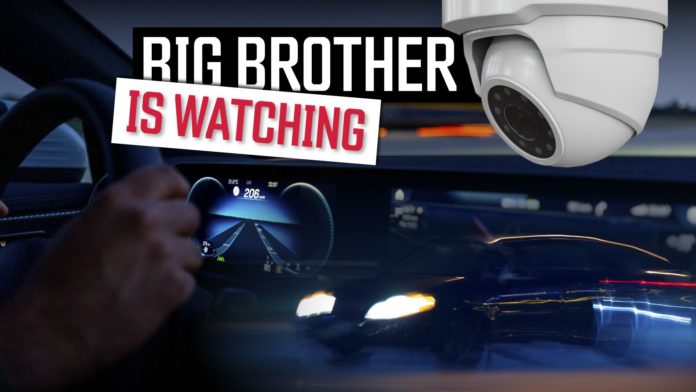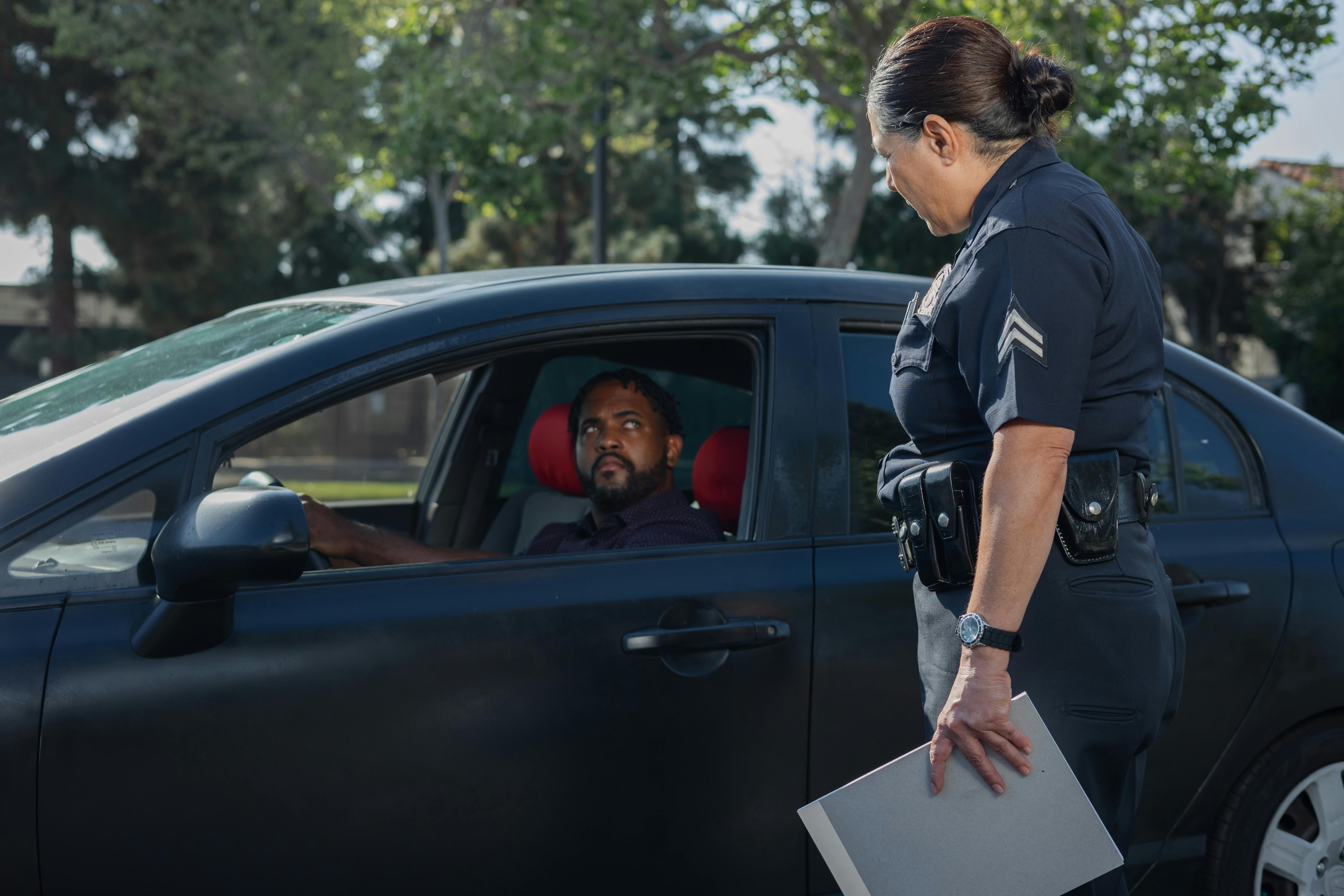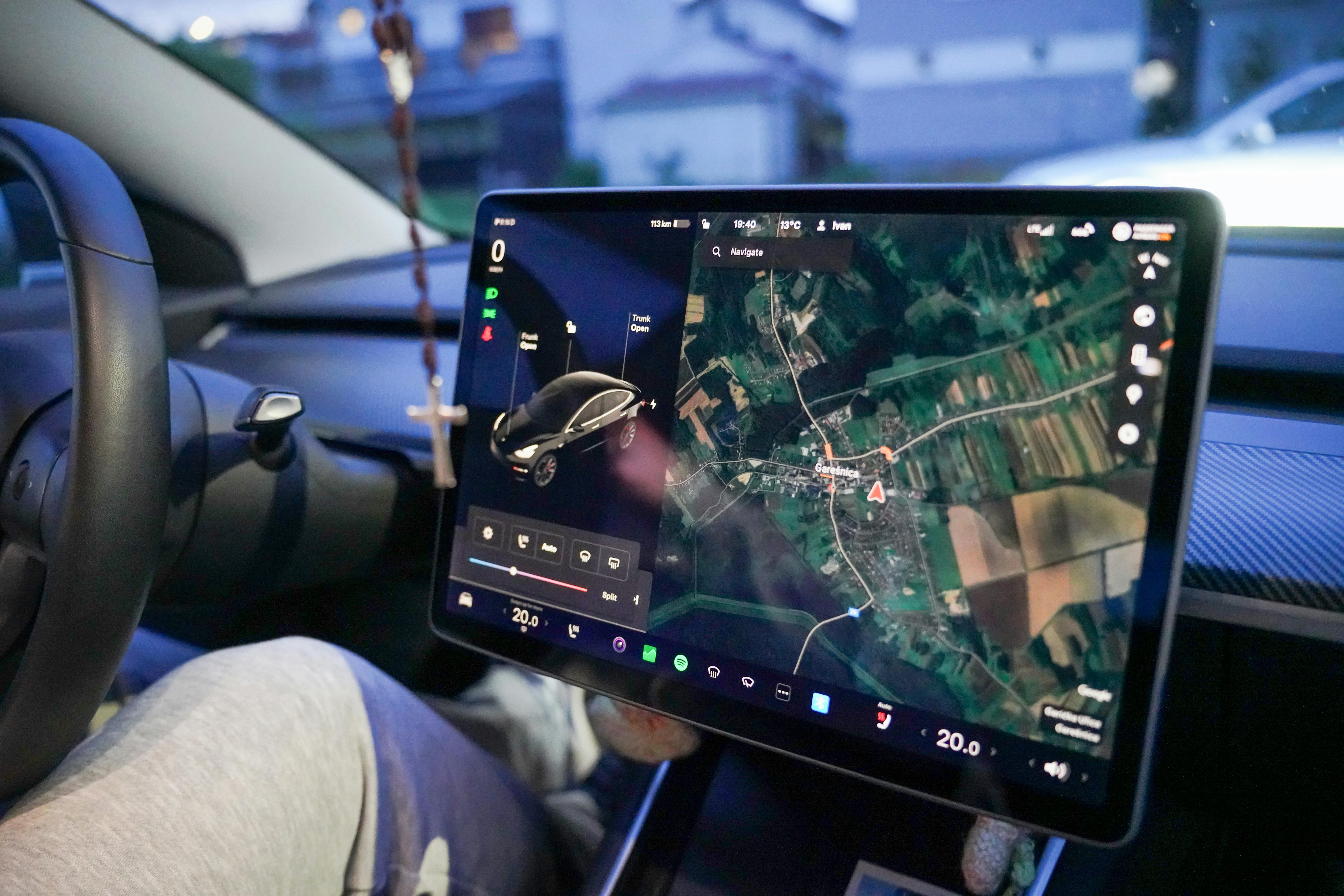Key Takeaways
- Intelligent Speed Assistance (ISA) is a technology that aims to reduce speeding-related accidents by limiting the speed of vehicles, now being made mandatory in Europe.
- The implementation of such systems is ill-considered and oversteps the line of privacy rights, opening up a slew of ethical dilemmas.
- Studies have proven that advanced driver assistance systems make drivers more inattentive instead of safer.
- The European implementation of ISA will have global consequences that need to be dealt with now.
Troubling news from across the Atlantic this week: the UK and the European Union are about to introduce a brand-new feature called Intelligent Speed Assist (ISA). The ISA is part of the European Road Safety Charter, and in one week, all new cars sold in EU countries and the UK must be equipped with one. The countries involved are so serious about implementing the ISA as quickly as possible that cars standing on dealer lots will be retrofitted with an ISA. The ISA differs from all the speed regulation devices we’ve seen so far because the safety charter has given automakers limited options for what the device can do. These options include a cascaded acoustic warning, cascaded vibrating warning, haptic feedback through the accelerator pedal, and a speed control function. For the first time, your car will be able to slow itself down and argue with you over speeding.
2:14
Related
The History And Rise of Advanced Driver-Assistance Systems (ADAS)
Advanced Driver Assistance Systems are the next big step up from the common active safety systems of yesteryear.
One solution mentioned in the charter is the haptic feedback of the go-faster pedal. The charter specifically mentions that the pedal will start vibrating and eventually push back against your foot. If you still ignore it, the cruise ISA will automatically slow the car down by cutting power, as it’s not allowed to use the brakes. According to the UK and the EU, this is not a nanny state feature because drivers can still turn it off. But it is quick to say that the car will automatically revert to the system being engaged whenever you turn it off.
Now, you might be wondering why the USA should be concerned. There are many reasons why, and we’ll highlight them all in this piece. But before we dive into it, you need to know that the Insurance Institute for Highway Safety (IIHS) has already released a statement calling for ISA to come to the USA and conducted a study of which alert system Americans would prefer.
Why ISA Is A Step Too Far
Automakers have developed various safety gadgets that interfere with driving, so ISA is not a new concept. The big pitch here is that ISA will lead to lower driving speeds, which will result in fewer deaths. The other main positive put forward by the authorities is that the driver no longer has to actively look for signs with the posted speed limit. ISA comes with road sign recognition, but it’s also connected to a GPS system that provides accurate speed limit data. According to the government, this means a driver has one less thing to do, so their focus will be directed to the road ahead. It sounds good in theory, but here are a few arguments against the concept.
- It has been proven that advanced driver assistance features make drivers lazy and inattentive. Taking one thing away does not mean the average driver will concentrate more on the road ahead. We live in a world where people will activate a Level 2 autonomous driver assistant and get in the back seat, despite Level 2 requiring driver attention and intervention.
- The European Commission is also open about the fact that people may rely on technology too much and that common sense will not prevail. If there’s a glitch in the system, and it suddenly says that the car is allowed to do 60 mph through a village, the driver will just accept it and go. You might think it’s a case of common sense, but we live in an era where people literally drove into lakes because a GPS told them to do so.
- Only cars sold after 7 July are required to have this technology, so the percentage between cars that have it and cars that won’t be vast. This will change over time, leading to a scenario where drivers will happily sit at 60 mph in the fast lane because that’s what the car says they’re allowed to do. Can you imagine the frustration out on the roads? This is a recipe for road rage.

Add CarBuzz to your Google News feed.
Ways To Get Around The ISA
Sure, the government says you can override the system, but you have to do so every time you get in the car. And automakers likely won’t make it easy in the era of the touchscreen. One possible solution is to pull the fuse, but how long before it becomes a part of the car’s built-in systems that can’t be switched off? Would you still pull the plug if it also deactivates the ABS and traction control, and what impact would that have on an insurance payout? Would an automaker still honor a warranty if some crucial safety features aren’t active?
But let’s get to the main problem most of you likely have with this system. Even though it can be switched off, there’s a good chance the car is still keeping an eye on proceedings, possibly even recording every infringement. It wouldn’t be a problem if that data couldn’t be obtained by the police without a warrant. Unfortunately, most automakers don’t care about a warrant and will happily share data if the police request it.
Besides the police, we have concerns about automotive insurance. Insurance companies obviously have a massive incentive to install a system like this in a car because any sort of infringement would help them avoid paying for a repair or a write-off, and they’re all too happy to use ‘prior behavior’ to avoid payouts, even if you were completely innocent in the situation that led to the claim.
What Can It Be Used For?
Call it a conspiracy theory if you must, but research into Intelligent Speed Adaptation started as early as 2007. One of the first studies looked into the concept of a Pay As You Speed system, where the ISA system would track the car and automatically subtract whatever amount for fines. Conversely, if the drivers drove carefully, they’d get 30% off their insurance premium. How about I just pay my insurance premium, and everyone leaves me the hell alone?
Finally, the ISA treads on not just the right to privacy but also the ability to take risks and enjoy the freedom enthusiasts feel when they get behind the wheel of their car.
Why You Should Be Concerned
The automotive industry is global, and big moves like this tend to have an impact. The proliferation of the touchscreen interface is a good example, and as the world’s second-largest automotive market, the USA played a huge role. Rearview cameras became mandatory in 2018, but automakers knew well in advance that it was going to happen. In anticipation of this, the standard touchscreen interface boom started in 2015. These days, it’s cheaper to put a digital instrument cluster and touchscreen interface in a car. In fact, some cars sold in the Third World have a touchscreen interface, but they have to go without an airbag and ABS.
At a certain point, it becomes more cost-effective to add a feature to a car than to produce thousands without it. If the cost is low enough, it will be passed on to the consumer. This will likely happen, and cars imported from Europe will likely come with this system as standard.
It will be interesting to see what big exporters like BMW do. Most of its SUVs come from Spartanburg, South Carolina, and it will have to comply with UK and EU regulations. Will the US-bound models be skipped over? Keep in mind that if you combine the sales of new cars in the UK, Germany, and France, Europe is still the third-largest market in the world behind China and the United States. Also, keep in mind that there are 27 countries in the European Union, and every car exported to these nations will have to comply. Basically, this technology is bound to have a global impact.
Why Speeding Is (Not) Dangerous
Speeding has long been the poster child for bad driving behavior. “Speeding causes more than a quarter of all crash deaths every year, accounting for more than 12,000 lost lives in 2021,” said Jessica Cicchino, vice president of research at IIHS. “In-vehicle technologies can be an important part of the solution.”
My main issue is that speeding isn’t clearly defined. It’s simply the act of driving over the speed limit, which can be one mile per hour or 35 mph. Speed, by itself, also can’t kill. It needs to be combined with something else, like dangerous or drunk driving, inexperience, and distracted, drowsy, or aggressive driving. Basically, the root cause of the accident is not speeding but something else. Allow me to demonstrate by exploring two scenarios using the two most commonly used arguments against speeding: reaction times and the car’s inability to cope with driving conditions.

Related
Fastest Car: Who Really Builds The Fastest Street-Legal Production Car?
Everyone makes their own claims, and no one seems to agree. Is it Bugatti? Hennessey? Koenigsegg?
In the first scenario, we have Chad, who just took delivery of his brand-new Porsche 911. He’s hooning through the mountains and goes into a blind left-hander, and suddenly, there’s a slow car in front of him. Even the 911’s mighty brakes can’t slow the car in time, and Chad rams the rear of a hypothetical Mitsubishi Mirage, killing everyone instantly.
In our second scenario, Stacy is in a new Cadillac Escalade-V. She’s driving down the highway at 90 mph in the middle of an epic storm, but it’s fine in Stacy’s eyes because the car has all-wheel drive. She then hits some standing water, the grooves of the road-biased tires fill up, and suddenly, Stacy is aquaplaning with no-wheel drive. She spins off the road, rolls the car, and dies.
In both accidents, speed played a significant role, but it was not the root cause of the accident. Chad got himself killed because he was being reckless, pummeling into a blind corner without knowing what was on the other side. Stacy was a blend of inexperience, also mixed with a splash of recklessness. Do you now see how speed needs to be combined with something else to kill?
Driving Too Slowly Kills, Too
The converse of speeding being related to a high incidence of road deaths can also be true – driving too slowly can kill, too. The real reason speeding is cited as being dangerous is that the relative difference in speed between two colliding objects is what increases the likelihood of a fatality. That’s why if you’re traveling much faster than the cars around you, an impact is more likely to result in deaths. But what if 99 out of 100 people on a stretch of road are driving 80 mph (the posted speed limit), and one person is driving at 20 mph? Any impact in that situation between the cars traveling at the same speed and the one car driving too slowly will be fatal, and it wasn’t the fast cars that were to blame.

Expert Opinion
Speed doesn’t actually kill, but it makes for a nice catchphrase that rolls off the tongue easily and looks scary on billboards. What the slogan should say is, “The difference in speed between two colliding objects increases the forces exerted upon the occupants of a vehicle, thus increasing the risk of serious injury and/or death.” And that’s what people aren’t being taught. Driving unnecessarily slowly is equally as dangerous as speeding in some situations.
That’s why Germany, the country with sections of highway that have no speed limits, doesn’t classify the cause of road accidents as simply “speeding” or “excessive speed” but rather as “inappropriate speed” – meaning driving at the wrong speed for a given situation. And even then, Germany sees more accidents caused by insufficient following distances, failure to yield to the right of way, or entering a roadway/turning off a roadway when it’s inappropriate to do so.
Why Speeding Laws Should Be Enforced
Am I saying that speeding shouldn’t be enforced? Nope, not at all. Humans mostly live under the unspoken authority of a common social contract. You don’t need the government to tell you that murder is bad because you grew up in a society where it’s so obviously frowned upon. That same social contract is the reason why most reasonable automotive enthusiasts know not to speed in suburban areas. In an area where there’s even a slight possibility that a child might run into the road, you slow all the way down to a speed that your car can scrub off in a second. Any reasonable person understands this, yet there is a small percentage of the population who bomb through the suburbs at 60 mph.

Related
Opinion: Special Licenses For High-Powered Cars Are A Brilliant Idea
It has to happen at some point.
The same goes for the freeway, where people also need to be managed. There’s a group of people who will happily sit at the posted limit and people who want to go faster, and they don’t mix well because lane discipline doesn’t exist. That’s why the autobahn in Germany works as well as it does. There’s a healthy respect for other drivers and a clear hierarchy for cars. A person in a Golf GTI gets out of the way of a BMW M3 driver, and everyone moves out of the way of the king of the road, the 911 Turbo.
Because people don’t understand the social contract of driving, the onus is on the government to manage the process. But the ISA is a step too far because it will impact the lives of those who do understand that a license is a privilege and not a right, and that it comes with massive responsibility.
Why Do We Speed?
We speed because we’re human, and we love the thrill of the perceived risk. The trick is to find that balance between risk and recklessness, which most enthusiasts manage to do. You don’t barrel into a blind corner, launch a Tesla Model S Plaid in the suburbs, or slide a Mustang out of a car meet because you will end up hurt and on the internet. This is dumb behavior and frowned upon by most enthusiasts. All we want is to enjoy our cars in the way they were intended, using common sense to ascertain whether the circumstances are right for whatever action. Would I get the rear of an M3 out just outside a school? Nope. Would I try to get the top score on the Drift Analyzer on a road where I can clearly see nobody else is around, and the only risk is to myself and a few bushes on the side of the road? For damn sure.

Related
California Wants Your Car To Beep At You When Exceeding The Speed Limit
The bill aims to reduce speed-related road deaths, but not everyone is in support of it.
I’m not advocating for a free-for-all environment, but having a system that can interfere with my driving and that I need to manually override every single time is a step too far. The idea of a car knowing exactly where I am and the speed I’m supposed to be going is a step too far. People will inevitably say that if you don’t break the law, there’s no need to be worried, but that’s not the point. Freedom is not just the right to be who you want to be as long as it doesn’t infringe on the rights of other people. It’s also the expectation of certain freedoms if you apply common sense. On the internet you’ll find thousands of stories of how people got out of a ticket because the police officer and the driver had common sense. An ISA only sees life through the lens of ones and zeroes.






